Dear Reader, in this age of AI created content, please support with your goodwill someone who works harder to provide the human-made. Sign up at the top of the lefthand column or bottom of this page. You will receive my hand illustrated monthly newsletter RESTORE NATURE and access to the biodiversity garden design course as I write...and nothing else, I respect your time. I am also removing the advertizing as best I can as its become intrusive inappropriate and pays me nothing.
The benefits of perennial vegetables
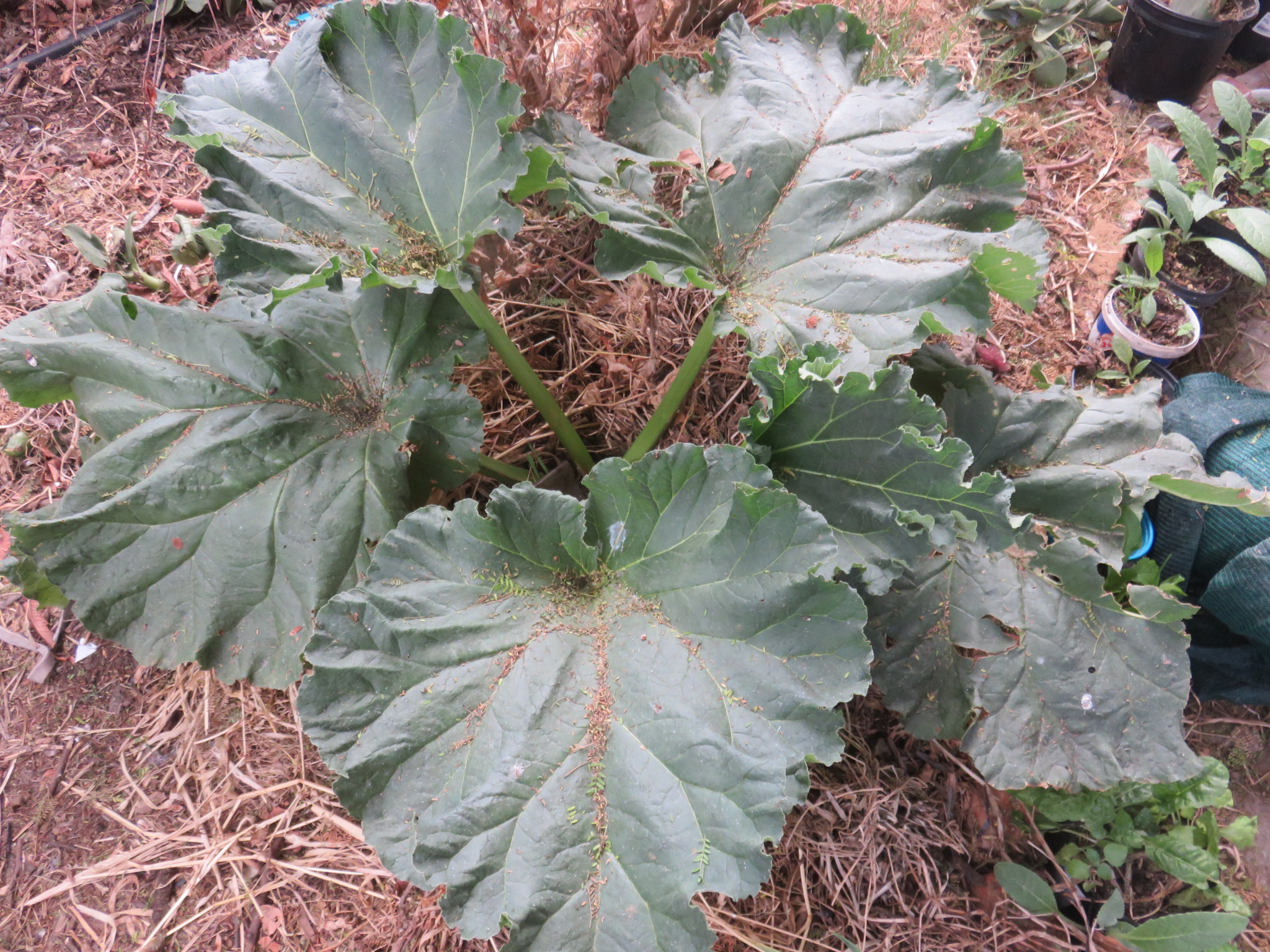 Rumbunctious Rhubarb. Heavenly stewed with green apples and served with vanilla ice cream.
Rumbunctious Rhubarb. Heavenly stewed with green apples and served with vanilla ice cream.The benefits of perennial vegetables and food plants are numerous when compared to annual vegetables. I have become an ardent supporter of perennial crops and I will lay out the reasons, which are persuasive.
But first, on this page you will find links to all the perennial vegetables and food plants I've written about from the of experience growing them. I have forty perennial food plants in the garden and I intend to write about them all in time and acquire more. So far you can read about how to grow space optimizing vines like passion fruit, fruiting trees or berry bearing trees like Numnums and Harpephyllum caffrum, the tangy African wild plum, tamarillos, olives, delicious carob (the chocolate of the desert), acorns and shrubs or erect herbs like nopal (or prickly pear) cactus greens, asparagus, fennel, pineapples, globe artichokes, rosemary and chard, and ground covers like mint, New Zealand and dune spinach and Carpobrotus or Cape fig and tubers like Jerusalem artichokes, cocoyam or turmeric.
Perennial vegetables are better for the soil and environment
Obviously without regular tilling and planting, the soil is disturbed less frequently so the perennials are better for the soil and this means better for the environment. Healthy soil sequesters more carbon than our trees, and is the greatest water cleaner, a giant water filter taking out all the poisons and helping us to a healthier life. Soil is also one of the best places to store water. Well hydrated landscapes are healthier and more resilient and productive, and healthy, well vegetated soil stores more water than depleted soil.
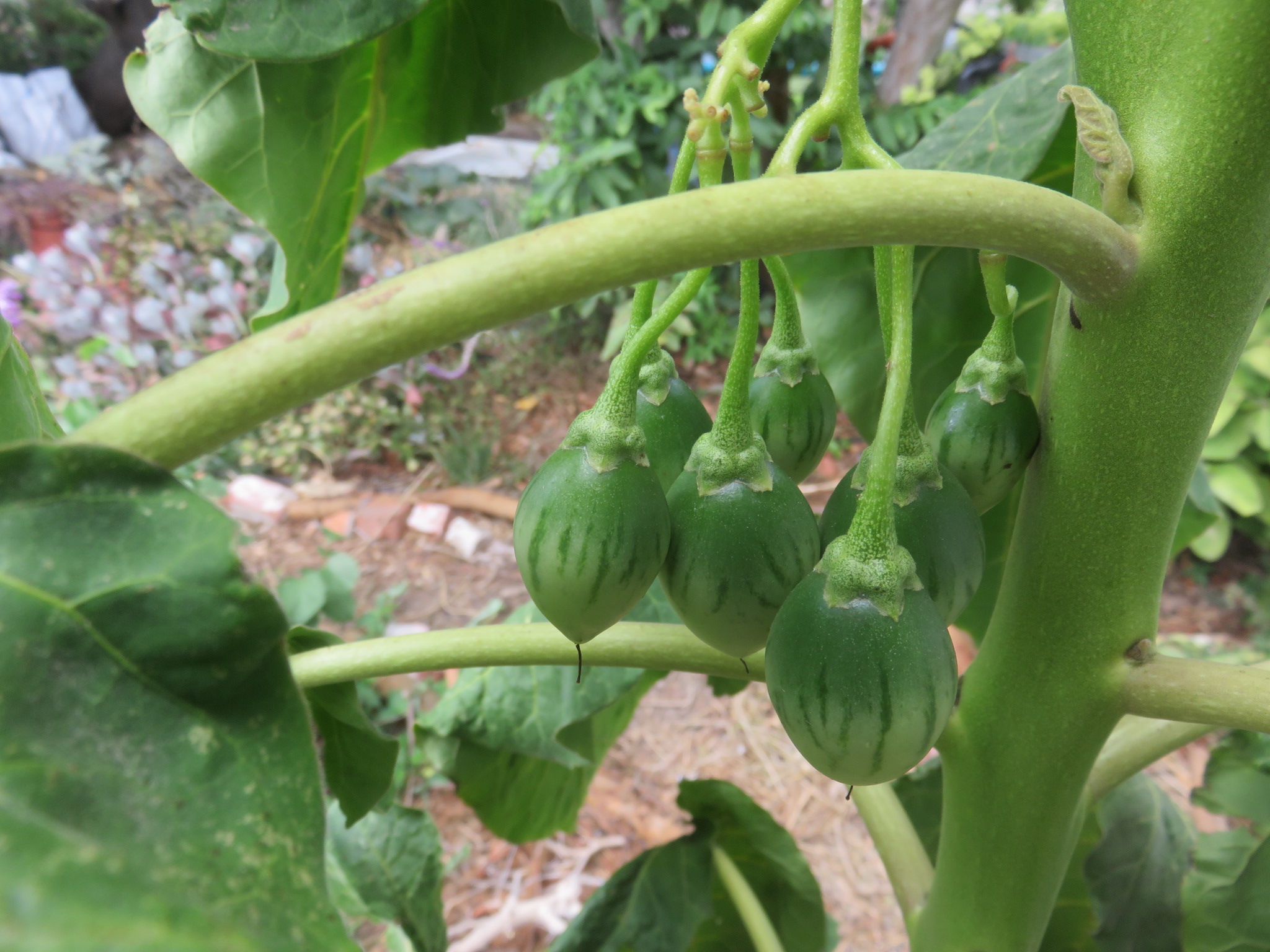 Two years in the making, these tamarillos have been on a journey with me.
Two years in the making, these tamarillos have been on a journey with me.Perennial vegetables have lower cultural requirements for nutrients, water and pesticides.
Thousands of years of plant breeding in the cold north has meant selection for plants which boom and bust in a few months because of the short growing season. This type of vegetable culture has been carried to the ex colonies. As a permaculturist, because of the way we are taught to think, the annual treadmill of sowing, planting out, and then harvesting in quick succession bothered me and I've been looking for a solution. I saw beautiful gardens laid by colleagues turn to dust after summer. I realized that a month of neglect turns an average vegetable garden into a wasteland. It seemed especially wrong in our permanently temperate Mediterranean climate.
Although our growing season is all year round, we have mostly annual vegetables at a place like the Cape, unfortunately. Most unfortunately, because perennials are not only better for the soil, they are often less developed and bred, and closer to the wild varieties. This means they are much hardier and their water and fertility needs are lessened compared to four month growth period annuals, which need perfect conditions to grow uninterrupted and rapidly, to build perfect plant tissue as fast as possible. Needing less coddling, perennials are often more tolerant of the vagaries of climate and soil.
Perennials are not only hardier concerning water and soil fertility, they have greater resistance to pests and diseases. They are closer to wild varieties genetically and have inbuilt chemical resistance which has evolved over eons.
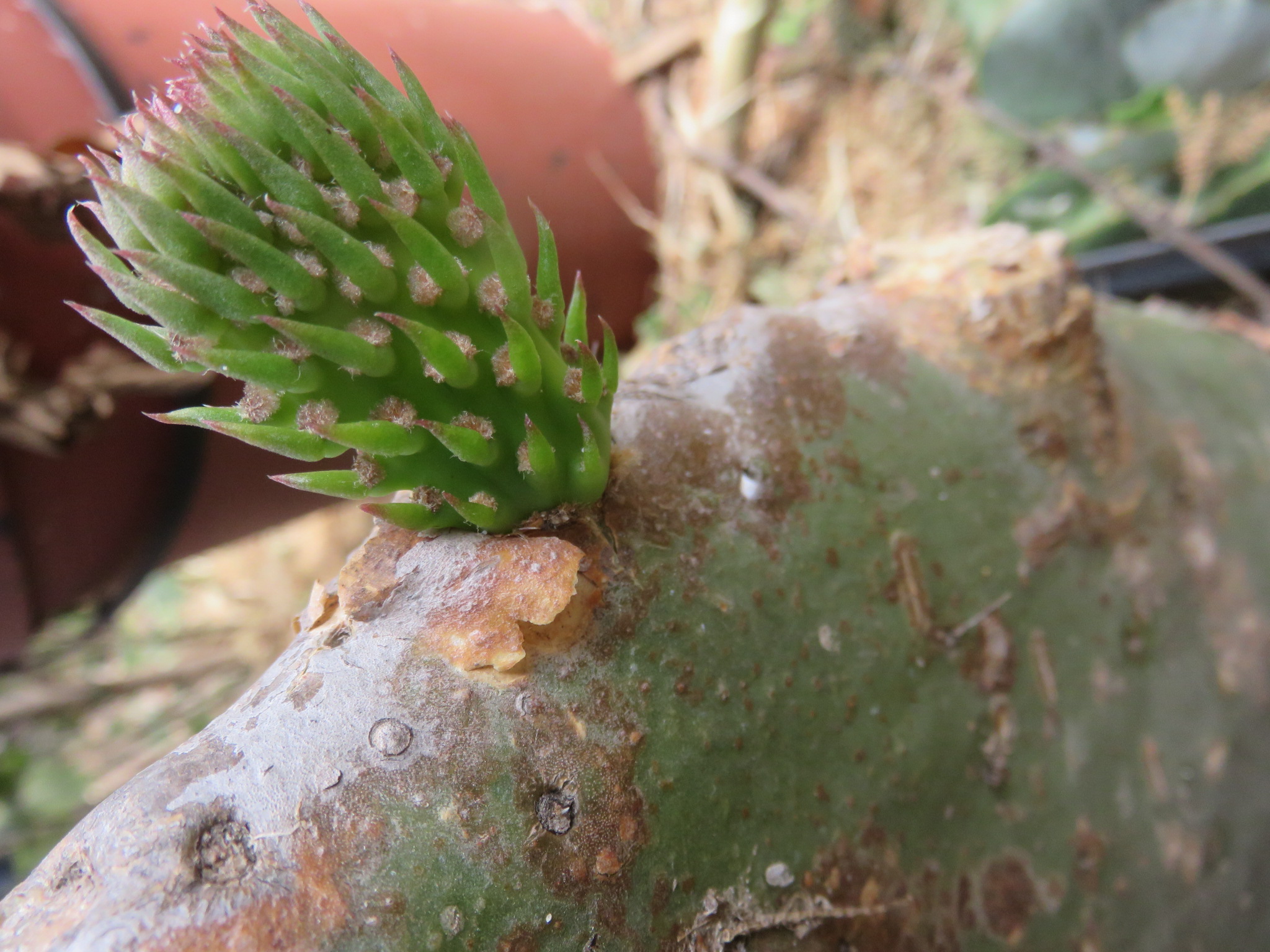 Rough stuff, my one pad Opuntia cutting is finally doing something, and one day I will too. Nopales yeee heee !
Rough stuff, my one pad Opuntia cutting is finally doing something, and one day I will too. Nopales yeee heee !Perennial vegetables supply greater food security
At the Cape we have frequent drought and poor soil, so its obvious that hardier vegetables like perennial vegetables will do better than the annuals. So for all the reasons above, perennial vegetables supply greater food security. Not only this they can give us greater health security, for which I will lay out two reasons below.
Perennial vegetables promise greater health in the community at large.
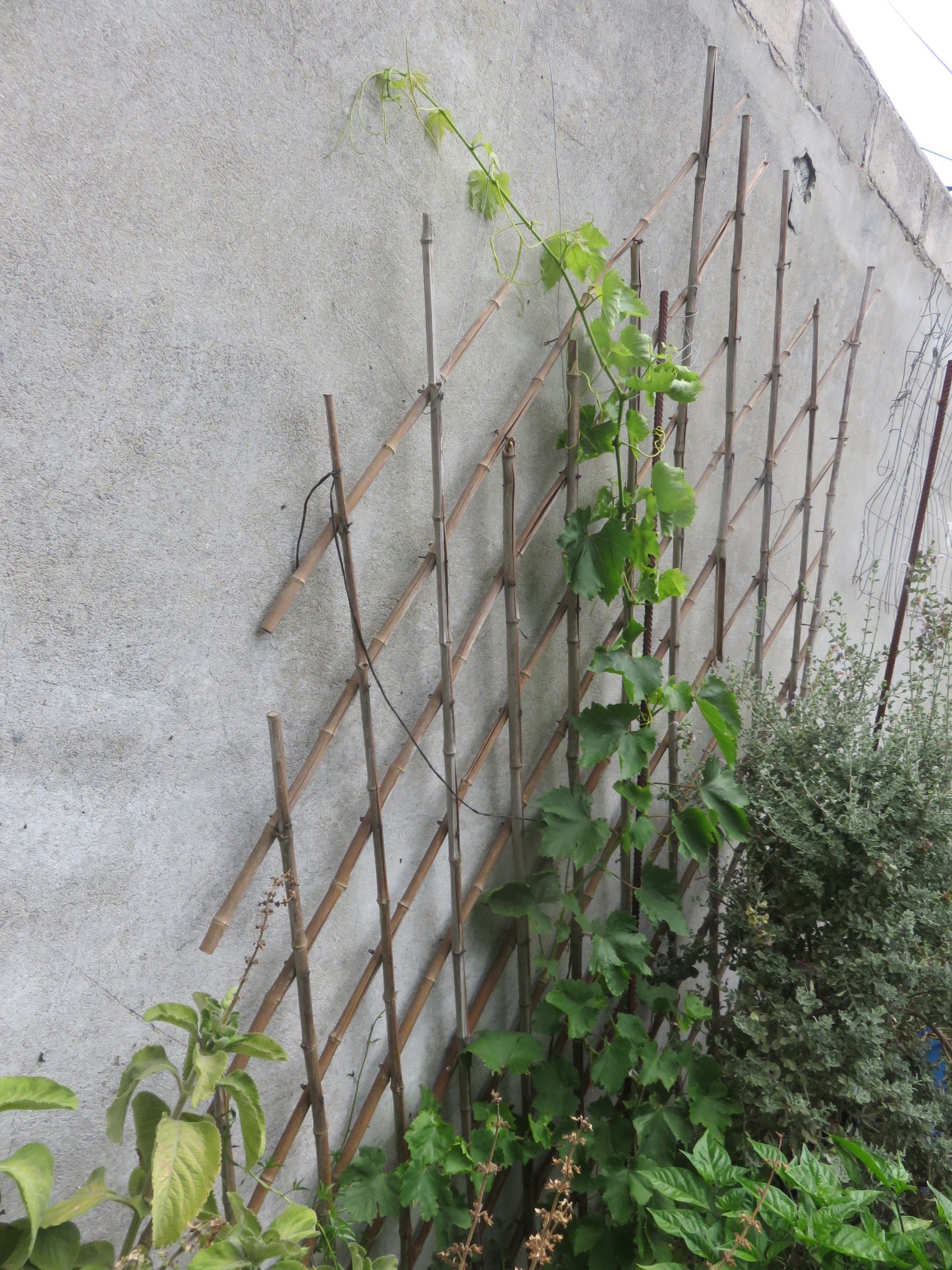 The humble grape vine redolent with history, and vein saving reservetrol, and leaves you can do lovely Greek things with.
The humble grape vine redolent with history, and vein saving reservetrol, and leaves you can do lovely Greek things with.less work... giving more
Obviously, perennial vegetables are much less work. After planting and watering until they are established, only trimming and harvesting is needed. Most working people are under too much time pressure to grow their own food. If they are not wealthy enough to buy organic their diet of agribusiness fodder both vegetable and animal exposes them to the danger of degenerative disease, in which possible chronic illnesses and a slow decline, in discomfort and at horrendous cost, looms in late life. Perennial vegetables are perfectly tailored to the lives of busy people who don't earn fabulous salaries but still want to eat healthily.
Perennial vegetables generally have much higher nutrient value
Because of their closeness to the wild plant originator,
and their in-built chemical resistance to disease, perennial vegetables have
the highest nutrient value of all. Breeding selects for
appearance, blander taste or sweetness, fast growth, rapid germination and greater profit. Breeders of past ages never even
considered
nutritional value because it was not yet known. A lot of breeding has been done without the health of the consumer being paramount and marketability being the main consideration. The protective benefits for human health of the diverse phytochemicals found in many wild, well adapted plants is not even part of main stream dietetic or medical knowledge. It will likely not be a consideration for commercial plant breeding for a long time to come. People complain that our vegetables and fruit taste so bland these days. Selective breeding for blandness is part of the cause. As the
bitterness and strong flavors were bred out of the vegetables and fruit,
and many plants were selected for whiteness, like potatoes and maize, their
nutrient and protective value against disease declined. The plant chemicals
that protect us from degenerative disease give the strong flavors and
bright colors. The old tangy, sometimes bitter, colorful perennials are better for us.
Where next ?
Becoming interested in perennial vegetables has opened up a wonderful new world to me. Because of our climate I've had to look beyond the European vegetables. Most food plants from warmer regions are perennial, to take advantage of the long growing season. A vast cornucopia of new foods becomes available, a splendid variety that transcends anything I thought possible when I began to look for perennial vegetables. The diversity is utterly overwhelming. I imagined they would be few and far between, and taste horrible, so stuck I was in a Eurocentric food paradigm.
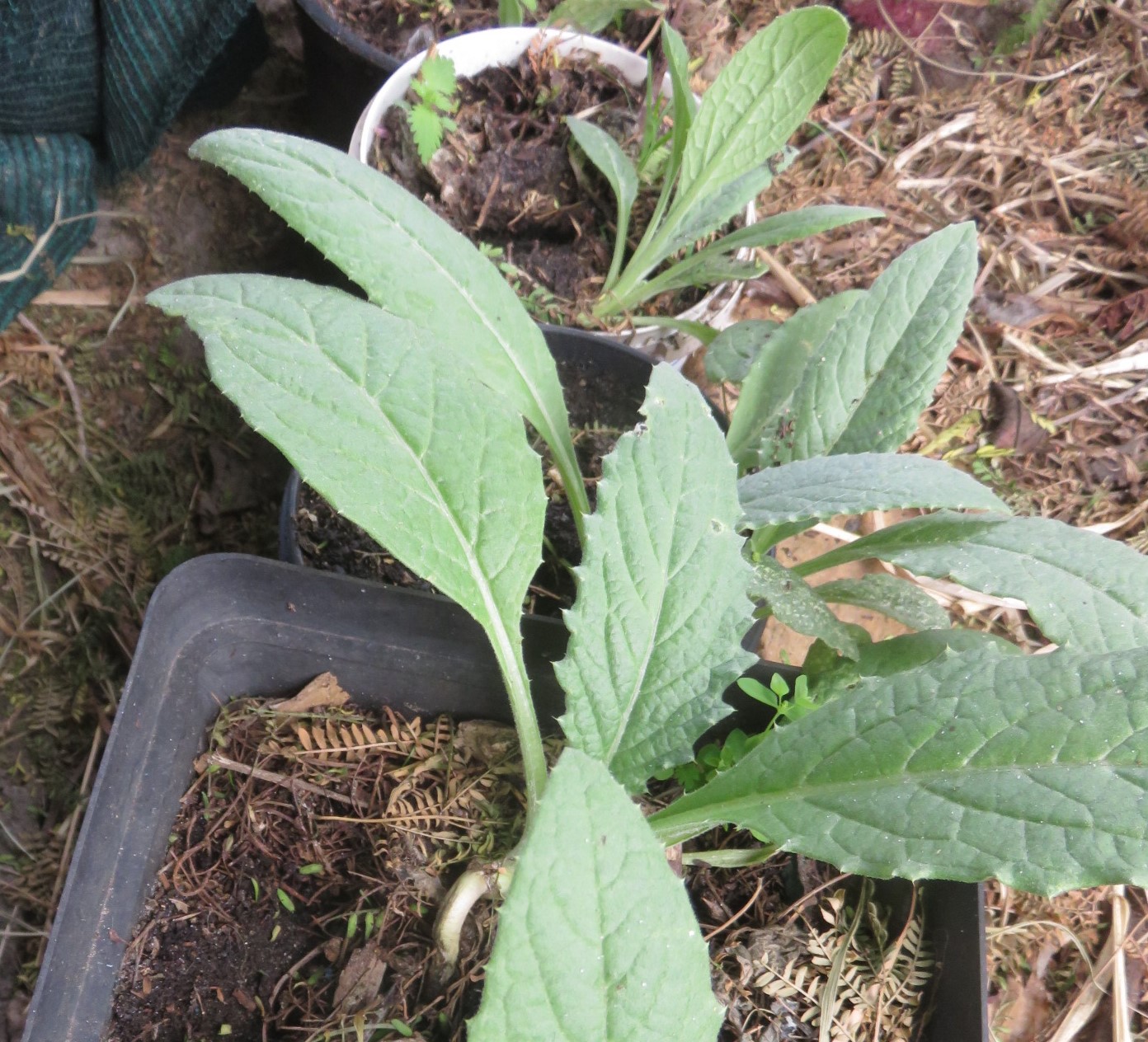 Globe artichoke seedlings. The flowers when eaten to wonderful things for gut flora.
Globe artichoke seedlings. The flowers when eaten to wonderful things for gut flora.Plant material supply when collecting perennial food plants
To begin with ideas for a perennial food garden I've begun to collect pictures on this topic on Pinterest.
Many of the commonly discussed perennials are hard to find at the local nursery. However my plant sourcing research indicates that in Europe, India, China and the USA there is a much greater diversity of available perennials in commercial nurseries than in South Africa. Nonetheless I am making slow progress. A good
source is food. Many tubers and spice and grain seeds found in food shops will
grow. We are culturing seed taken from fruit. I know that grafting good fruit stock is the way its usually done, but we are aiming for a wilder, more resilient version of the big tasteless apples at the grocery store. As I learn more about sourcing and growing perennials, and their climate and soil tolerances, I can
document my progress.
Following is the list of perennial food plants which I have grown and written about. It shows which parts I know to be edible from experience, with how to grow instructions and more.
Fennel leaves, bulbs and seeds
Kei apple fruit
Globe artichokes flower buds
Asparagus shoots
Cocoyam tubers and sometimes leaves
Sour or Cape fig leaves and fruit capsules
Jerusalem artichoke tubers
Numnum fruit
Passion fruit vines fruit
African wild plum tree berries
Tamarillo (tree tomato) fruit
Carob bean
Nopales (prickly pears) pads and fruit
pineapple fruit
mint leaves
olive fruit
New Zealand and dune spinach leaves
rosemary leaves
chard leaves
turmeric tubers
------
home page for lots of links on natural gardening
------
Restore Nature Newsletter
I've been writing for four years now and I would love to hear from you
Please let me know if you have any questions, comments or stories to share on gardening, permaculture, regenerative agriculture, food forests, natural gardening, do nothing gardening, observations about pests and diseases, foraging, dealing with and using weeds constructively, composting and going offgrid.
SEARCH
Order the Kindle E-book for the SPECIAL PRICE of only
Prices valid till 30.09.2023
Recent Articles
-
garden for life is a blog about saving the earth one garden at a time
Apr 18, 25 01:18 PM
The garden for life blog has short articles on gardening for biodiversity with native plants and regenerating soil for climate amelioration and nutritious food -
Cape Flats Sand Fynbos, Cape Town's most endangered native vegetation!
Apr 18, 25 10:36 AM
Cape Flats Sand Fynbos, a vegetation type found in the super diverse Cape Fynbos region is threatened by Cape Town's urban development and invasive alien plants -
Geography Research Task
Jan 31, 25 11:37 PM
To whom it may concern My name is Tanyaradzwa Madziwa and I am a matric student at Springfield Convent School. As part of our geography syllabus for this
"How to start a profitable worm business on a shoestring budget
Order a printed copy from "Amazon" at the SPECIAL PRICE of only
or a digital version from the "Kindle" store at the SPECIAL PRICE of only
Prices valid till 30.09.2023







